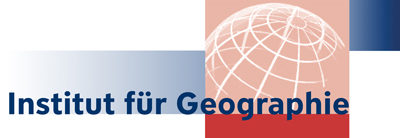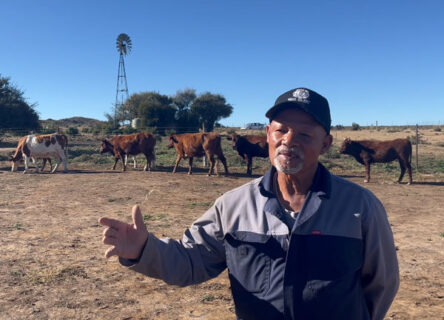The concept of commonage farming in South Africa – Anna-Maria Hartmann, October 16, 2025
After the end of apartheid in 1994, South Africa’s broader land reform policy was established (Puttick et al., 2011; Martens, 2011). As a part of this, the Commonage Programme was introduced, requiring each municipality to purchase land to make it available for communal use (Martens, 2011; Davenport et al., 2012). This form of communal resource use is comparable to the self-managed Allmende in agrarian village communities in Germany.
The Commonage is open to everyone; however, it is predominantly used by the poor for livestock grazing and resource gathering. In South Africa, livestock often functions as a form of savings or investment (Puttick et al., 2011; Martens, 2011; Davenport et al., 2012). Once individuals earn money, they tend to purchase livestock instead of depositing their income in a bank or keeping it at home. Subsequently, a second animal is purchased, which then reproduces, thus increasing their wealth. The idea behind the programme was to provide land without lease payments to the population, that had been disadvantaged during apartheid. This was intended to create opportunities for people to keep livestock and expand their herds, thereby enabling them to eventually enter and move up to the commercial agricultural market.
The interviewed men already possess a considerable number of animals and, through their previous farming experience, have gained substantial knowledge and skills. In general, Commonage land is not just used for farming but also for spiritual practices and for collecting building materials, herbs, and firewood. Some individuals earn their livelihood by selling firewood (Cockburn et al., 2024; Martens, 2011; ibid.). However, shared use often leads to conflicts among different interest groups. Overuse of land and unclear management structures are common problems in Commonages. The struggle over land-use rights in cases of overgrazing has created a hierarchy in which farmers with larger herds intimidate and displace newcomers (Martens, 2011). As a result, Commonage land is often dominated by a small number of established farmers.
Although municipalities are responsible for managing the land, this is often only partially implemented, and the importance of proper management is not fully recognised (Davenport et al., 2012). This leads to consequences such as neglected resource distribution and an incomplete understanding of the social, economic, and ecological value of the Commonage (Davenport et al., 2012; Davenport et al., 2011).
Given the persistent poverty in South Africa—where the country records the world’s highest Gini coefficient, indicating the greatest income inequality (McKeever, 2023)—food insecurity and, consequently, livestock thefts are on an upward trend. One of the interviewed farmers also referred to these challenges, explaining his long-standing efforts to transition to a commercial production level. In practice, however, this system is inadequately implemented in South Africa. Applicants often have to wait for a long time for an allocation of a farm, which is frequently not equipped with the necessary infrastructure (Martens, 2011). During crises such as the last drought (2015–2019), many farmers are entirely dependent on external support, as it is extremely difficult to keep livestock alive under such conditions.
Compilation of interviews with commonage farmers in Nieu Bethesda in June 2025.
The edited video provides insight into the situation of (mostly) subsistence-oriented farmers in the town of Nieu-Bethesda (Eastern Cape), whose perspectives and experiences also contributed to my Master’s research project, “Climate Change Perceptions, Impacts, and Adaptation: A Comparative Study of Commonage Livestock Farmers in Two Climatic Regions of the Eastern Cape, South Africa”. The fieldwork took place in June 2025 as part of an Erasmus+ exchange semester at Rhodes University in Makhanda, South Africa.
Literaturverzeichnis:
Cockburn, J., N. Mtati, N. Foxon, T. Madiba, M. Nyalungu, P. Ngwenya, B. Tharmae (2024): eYethu: It’s yours. Diverse socio-cultural values of nature in the Bathurst-Nolukhanyo Commonage. Report on the Bathurst Residence and Ratepayers Association website. URL: https://brra.org.za/wp-content/uploads/2024/10/DES-Report-on-Bathurst-Commonage-Cultural-Ecosystem-Services-June2024-Final.pdf (13.3.25).
Davenport, N., C. Shackleton, J. Gambiza (2011): Use and users of municipal commonage around three small towns in the Eastern Cape, South Africa. Journal of Environmental Management 92(6): 1449-1460.
Davenport, N., C. Shackleton, J. Gambiza (2012): The direct use value of municipal commonage goods and services to urban households in the Eastern Cape, South Africa. Land Use Policy 29(3): 548-557.
Martens, C. (2011): The contribution of municipal commonage to land reform and poverty alleviation in South Africa. A case study of the Eastern Cape. In: Hebnick, P. & C. Shackleton (eds.) Reforming Land and Resource Use in South Africa. Impact on livelihoods: 254-274. ISBN: 9780203839645.
McKeever, M. (2023): Social stratification and inequality in South Africa. Sociology Compass. Review Article. DOI: https://doi.org/10.1111/soc4.13173.
Puttick, J., M. Hoffmann & J. Gambiza (2011): Historical and recent land-use impacts on the vegetation of Bathurst, a municipal commonage in the Eastern Cape, South Africa. African Journal of Range and Forgage Science 28(1): 9-20. DOI: 10.2989/10220119.2011.570946.

